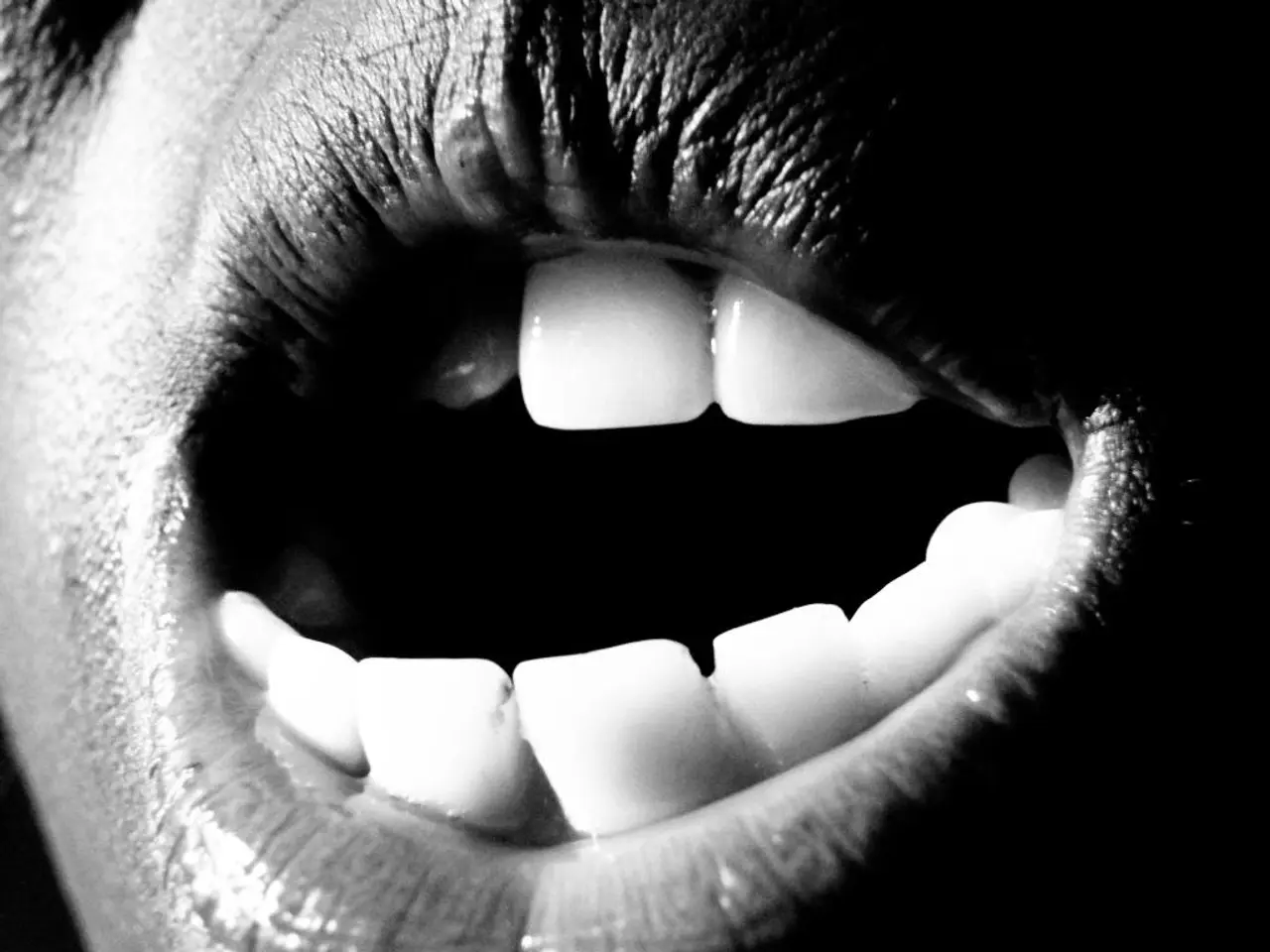Oral cancer: Symptoms, identification, and remedies
Oropharyngeal cancer is a type of head and neck cancer that affects the oropharynx, which includes the middle part of the throat and the tonsils. This article aims to provide an overview of the risk factors, symptoms, and preventive measures associated with oropharyngeal cancer.
### Risk Factors
High-risk Human Papillomavirus (HPV) types, particularly HPV-16, are significant risk factors for developing oropharyngeal cancer. The risk of HPV-related cancers increases with age and is more common in men. Engaging in high-risk sexual behaviour, including oral sex, increases the risk of HPV infection.
Tobacco and alcohol use are still important risk factors for non-HPV related head and neck cancers, although they are less common in HPV-related cases.
Other risk factors include age and sex, with oropharyngeal cancer being more common in men and the risk increasing with age.
### Symptoms
Any persistent sore, lump, or thick patch in the mouth or throat that doesn't heal within two weeks should be evaluated. Other symptoms include unexplained mouth pain, ear pain, difficulty swallowing, or painful swallowing, red, white, or mixed patches in the mouth or on the lips, loss of feeling in the mouth, face, or neck, persistent hoarseness or other voice changes, swelling, thickening, or lump in the mouth, on the lip, or in the neck region, sudden weight loss or difficulty chewing or swallowing.
### HPV and Oropharyngeal Cancer Development
HPV, particularly type 16, plays a significant role in the development of oropharyngeal cancer. HPV-positive oropharyngeal cancers have been increasingly diagnosed, especially in younger men with no history of tobacco or alcohol use but with a high number of lifetime sexual partners. These cancers tend to have better treatment responses and survival rates compared to their HPV-negative counterparts.
### Prevention and Reducing Risk
To reduce the risk of mouth cancer, people should avoid using any form of tobacco product, avoid excessive alcohol consumption, avoid chewing betel nuts, have a regular dental check, monitor for changes in the mouth, have the vaccination to protect against HPV, and avoid drinking very hot beverages.
Untreated, oral cancer may start in one part of the mouth, then spread to other parts of the mouth, the head, neck, and the rest of the body. Early detection is crucial for successful treatment, so it is essential to discuss any changes in the mouth with a doctor.
If diagnosed with mouth cancer, treatment may include surgery, radiation therapy, chemotherapy, hyperthermia therapy, and a combination of these treatments. The treatment outlook for oral cancer depends on the stage of cancer.
The American Cancer Society (ACS) estimates that around 53,000 Americans will receive a diagnosis of oral or oropharyngeal cancer in 2019. Smokers and heavy drinkers should have regular checkups with the dentist, as tobacco and alcohol are risk factors for mouth cancer.
In conclusion, understanding the risk factors, symptoms, and preventive measures associated with oropharyngeal cancer is crucial for early detection and successful treatment. Regular dental check-ups, a healthy lifestyle, and awareness of the signs and symptoms can significantly reduce the risk of this disease.
- Additionally, high-risk Human Papillomavirus (HPV) types, especially HPV-16, are significant risk factors for the development of atopic dermatitis, a type of skin-care condition.
- The risk of HPV-related skin-care conditions increases with age and is more common in women.
- Engaging in high-risk sexual behavior, including oral sex, increases the risk of HPV infection and the subsequent development of psoriatic dermatitis.
- Obesity, diabetes, migraine, arthritis, and mental-health issues like depression can be associated with an increased susceptibility to HPV infection.
- Tobacco and alcohol use are still important risk factors for non-HPV related skin-care conditions and dermatological diseases, although they are less common in HPV-related cases.
- Other risk factors for HPV-related skin-care conditions include age and sex, with certain conditions being more prevalent in women and the risk increasing with age.
- Symptoms of HPV-related skin-care conditions include any persistent sore, lump, or thick patch on the skin that doesn't heal within two weeks.
- Other symptoms include changes in the skin such as red, white, or mixed patches, loss of feeling in the affected area, and unexplained pain or itchiness.
- In the field of science and medical-conditions, predictive models are being developed to help identify individuals at high risk of HPV-related skin-care conditions and dermatological diseases.
- Proton therapy, a form of radiation therapy, is being explored for the treatment of HPV-related skin-care conditions and other head and health-and-wellness matters.
- CBD, a naturally occurring compound, is being studied for its potential role in managing symptoms associated with HPV-related skin-care conditions, dermatological diseases, and mental-health issues.




